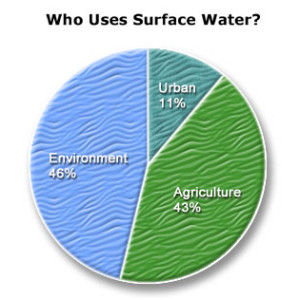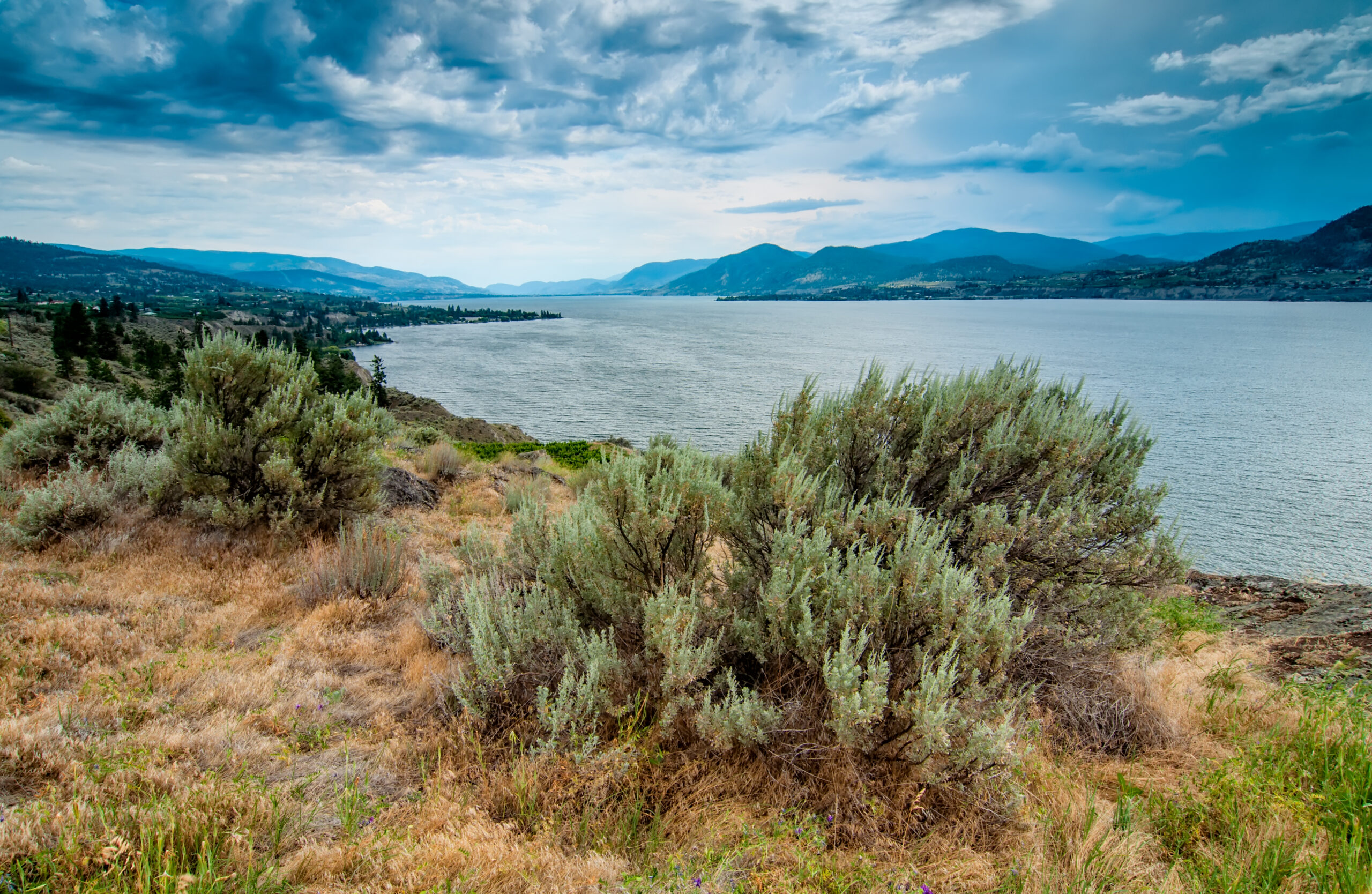Water of course, falls out of the sky – as rain, snow, sleet, and hail. In most years, California gets almost 200 million acre-feet of precipitation. That would be about 200 million football fields each filled a foot deep – more than enough water to cover all of California. But of course, California isn’t covered in water. So where does all that rainfall and snow melt go?
About 2/3 is used by trees and plants, soaks into the ground, or evaporates. About 1/3 runs off into rivers streams and lakes. These rivers, streams and lakes make up our surface water which helps the Palmdale Water District supply water to its customers everyday.
Rivers and streams often begin in the mountains as fresh water springs or runoff from melting snow. As the water flows down the mountain, it joins to form streams. These streams continue flowing, sometimes joining other streams and becoming rivers. Throughout history, communities have developed along rivers. People eat the fish in the rivers and use the water to drink, to irrigate crops, and to transport themselves and products. In California, much of the water that runs off the mountains eventually flows into great river systems: the Sacramento and San Joaquin Rivers.
Lakes are bodies of fresh water – sometimes big, sometimes small – that are surrounded by land. Many lakes in California have appeared naturally. Other lakes, however, have been built. These “artificial” lakes – called reservoirs – are created when we need a place to store future drinking water. Reservoirs have other uses as well:
About one-half of the surface water that is available for us to use in California is contained in about 1,300 reservoirs. Water flows into or out of reservoirs either through rivers or aqueducts. Aqueducts are canals, pipelines, and tunnels that stretch across land and through mountains to deliver water to the farms and cities that need it. Throughout the state, aqueducts transport millions of gallons of water across hundreds of miles.
Who uses surface water?

We don’t use all the useable surface water. Some flows directly into the ocean. About half the remaining water is needed for fish, animals, and plants in the environment. Surface water is also needed on farms to grow crops and feed animals. The rest is used in our urban centers. Before being delivered to our homes and businesses, surface water is treated at a filtration plant. At these plants, the water is cleaned and purified. It is filtered to remove dirt and disinfected with chemicals to kill any germs.
View the Sanitary Survey Report.

| Cookie | Duration | Description |
|---|---|---|
| cookielawinfo-checkbox-analytics | 11 months | This cookie is set by GDPR Cookie Consent plugin. The cookie is used to store the user consent for the cookies in the category "Analytics". |
| cookielawinfo-checkbox-functional | 11 months | The cookie is set by GDPR cookie consent to record the user consent for the cookies in the category "Functional". |
| cookielawinfo-checkbox-necessary | 11 months | This cookie is set by GDPR Cookie Consent plugin. The cookies is used to store the user consent for the cookies in the category "Necessary". |
| cookielawinfo-checkbox-others | 11 months | This cookie is set by GDPR Cookie Consent plugin. The cookie is used to store the user consent for the cookies in the category "Other. |
| cookielawinfo-checkbox-performance | 11 months | This cookie is set by GDPR Cookie Consent plugin. The cookie is used to store the user consent for the cookies in the category "Performance". |
| viewed_cookie_policy | 11 months | The cookie is set by the GDPR Cookie Consent plugin and is used to store whether or not user has consented to the use of cookies. It does not store any personal data. |
